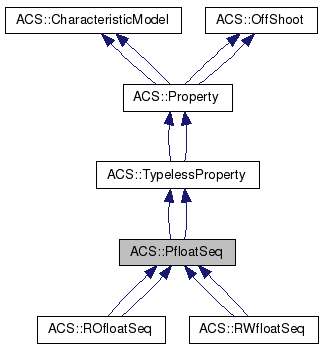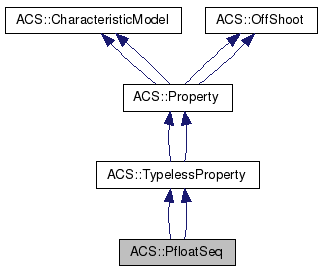import "baci.idl";
List of all members.
Public Member Functions |
| floatSeq | get_sync (out ACSErr::Completion c) |
| void | get_async (in CBfloatSeq cb, in CBDescIn desc) |
| long | get_history (in long n_last_values, out floatSeqSeq vs, out TimeSeq ts) |
| Monitorfloat | create_monitor (in CBfloatSeq cb, in CBDescIn desc) |
| Monitorfloat | create_postponed_monitor (in Time start_time, in CBfloatSeq cb, in CBDescIn desc) |
| floatSeq | get_sync (out ACSErr::Completion c) |
| void | get_async (in CBfloatSeq cb, in CBDescIn desc) |
| long | get_history (in long n_last_values, out floatSeqSeq vs, out TimeSeq ts) |
| Monitorfloat | create_monitor (in CBfloatSeq cb, in CBDescIn desc) |
| Monitorfloat | create_postponed_monitor (in Time start_time, in CBfloatSeq cb, in CBDescIn desc) |
Public Attributes |
| readonly attribute TimeInterval | default_timer_trigger |
| readonly attribute TimeInterval | min_timer_trigger |
| readonly attribute float | min_delta_trigger |
| readonly attribute float | default_value |
| readonly attribute float | graph_min |
| readonly attribute float | graph_max |
| readonly attribute float | min_step |
Detailed Description
The PfloatSeq Property manages sequences of float values. All methods and callbacks that return those sequences have modified signatures with respect to the Pfloat Property. The characteristics, however, remain simple floats, as they apply to all elements in the sequence. Also the monitor is a simple Monitorfloat. The pattern of the interface is equivalent to the Pfloat property.
Member Function Documentation
| long ACS::PfloatSeq::get_history |
( |
in long |
n_last_values, |
|
|
out floatSeqSeq |
vs, |
|
|
out TimeSeq |
ts | |
|
) |
| | |
| long ACS::PfloatSeq::get_history |
( |
in long |
n_last_values, |
|
|
out floatSeqSeq |
vs, |
|
|
out TimeSeq |
ts | |
|
) |
| | |
Member Data Documentation
The documentation for this interface was generated from the following files:


 1.7.0
1.7.0